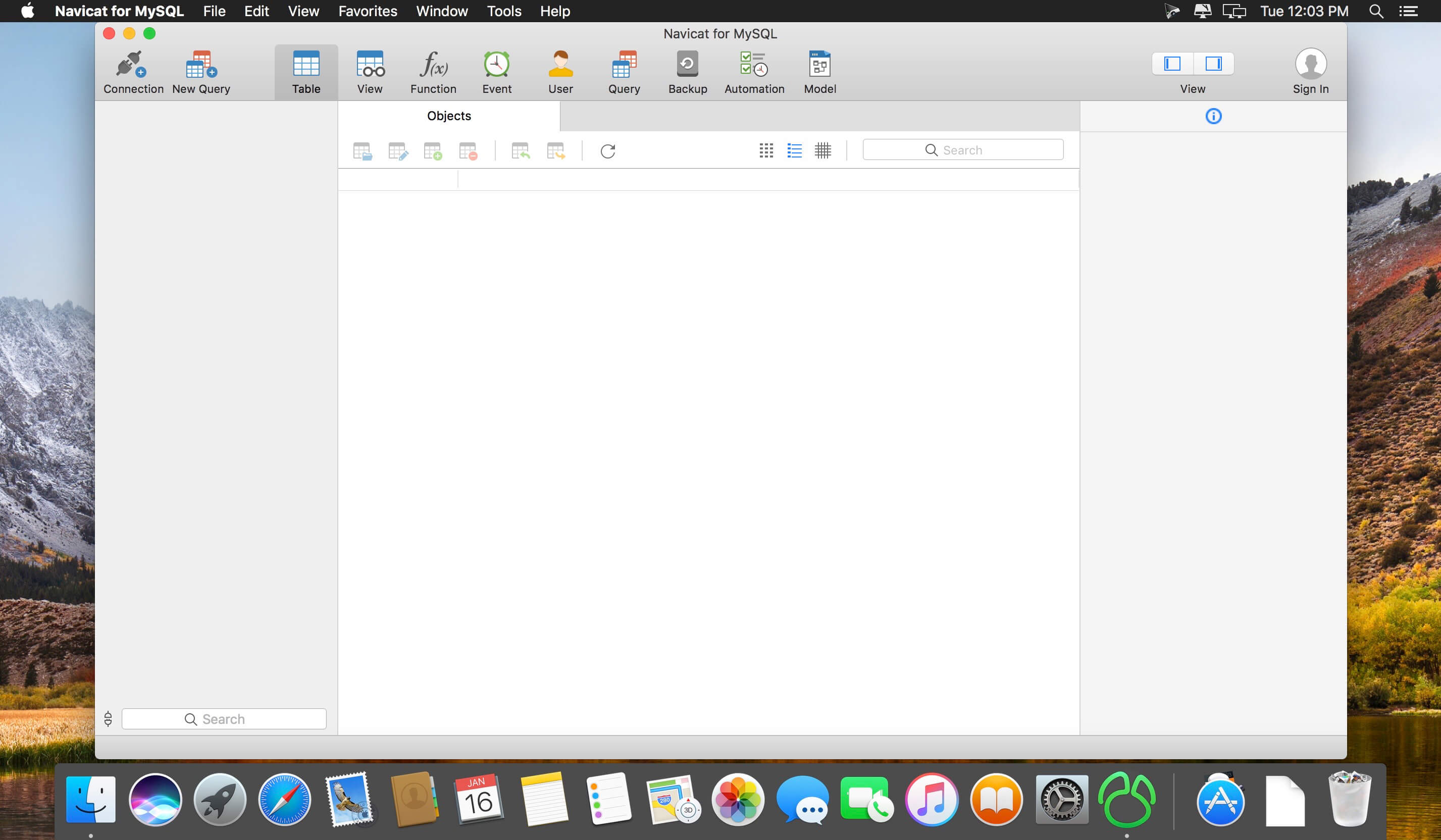Navicat For Mysql 12.0.22 For Macos
Navicat for MySQL (Mac OS X) supports 15 different file extensions, that's why it was found in our database. The following tables provide information about the association of Navicat for MySQL (Mac OS X) with file extensions. If the Navicat for MySQL (Mac OS X) program can be used to convert the file format to another one, such information will. Navicat combines all Navicat versions in an ultimate version and can connect MySQL, Oracle and PostgreSQL. Navicat allows user to drag and drop tables and data from Oracle to MySQL, PostgreSQL to MySQL, Oracle to PostgreSQL and vice versa within a single client.
The primary purpose of our website is to provide the user with a list of software programs that support a particular file extension, as well as that help to convert them to another format. Navicat for MySQL (Mac OS X) supports 15 different file extensions, that's why it was found in our database. The following tables provide information about the association of Navicat for MySQL (Mac OS X) with file extensions. If the Navicat for MySQL (Mac OS X) program can be used to convert the file format to another one, such information will also be provided.
Associations of Navicat for MySQL (Mac OS X) with the file extensions

Navicat for MySQL (Mac OS X) opens the files:
Navicat for MySQL (Mac OS X) converts the files:
What can I use this information for?
This information is especially useful when looking for a way to open a specific file. If you already have Navicat for MySQL (Mac OS X) installed on your computer, you can check which file extensions it supports and look for the data you need in this specific format (or to what format you should convert the data so that you can open them in the Navicat for MySQL (Mac OS X)).
I do not have a Navicat for MySQL (Mac OS X) yet. Where should I get it?
By far the most safe way is to download Navicat for MySQL (Mac OS X) directly from the developers's website. If you are going to download the Navicat for MySQL (Mac OS X) from a website that offers a database of downloadable software, you have to reckon with the fact that when you install it on your computer, you will also install the unwanted extras. Please, pay special attention to this.
I cannot see the file extensions. What should I do?
File extensions are not normally displayed to users. To change this, go to Control Panel, select Appearance and Personalization and Folder Options. Next, select the View and find the option 'Hide extensions for known file types'. The option should be deselected (cleared) and confirmed with OK.
For a list of macOS versions that the MySQL server supports, see https://www.mysql.com/support/supportedplatforms/database.html.
MySQL for macOS is available in a number of different forms:
Native Package Installer, which uses the native macOS installer (DMG) to walk you through the installation of MySQL. For more information, see Chapter 2, Installing MySQL on macOS Using Native Packages. You can use the package installer with macOS. The user you use to perform the installation must have administrator privileges.
Compressed TAR archive, which uses a file packaged using the Unix tar and gzip commands. To use this method, you 'to open a Terminal window. You do not need administrator privileges using this method, as you can install the MySQL server anywhere using this method. For more information on using this method, you can use the generic instructions for using a tarball, Installing MySQL on Unix/Linux Using Generic Binaries.
In addition to the core installation, the Package Installer also includes Chapter 3, Installing a MySQL Launch Daemon and Chapter 4, Installing and Using the MySQL Preference Pane, both of which simplify the management of your installation.
Navicat For Mysql 12.0.22 For Mac Os 2
For additional information on using MySQL on macOS, see Chapter 5, General Notes on Installing MySQL on macOS.

